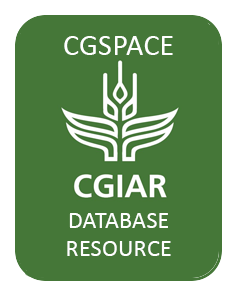Advanced course for Asia & North Africa on conservation agriculture: Gateway for sustainable agrifood systems
The Conservation Agriculture (CA) practices with increased acceptance across the globe are being considered as harbinger for sustainable intensification of smallholder production systems. Its positive impact on natural resources, and resilience to climate change effects are widely acknowledged. In developing world and specially Asia and Africa, CA is a relatively new introduction and hence capacity development is vital for development, adaptation, and scaling CA based technologies for impact at scale on smallholder farmers in these regions.
Accumulation of cadmium in soils, litter and leaves in cacao farms in the North Sierra Nevada de Santa Marta, Colombia
Cadmium (Cd) accumulation in Colombian cacao is a growing concern due to its potential health impacts and EU regulations on Cd content in chocolate products. Furthermore, cacao plays a significant role as an agricultural commodity and a tool for illegal crop replacement, yet our regional understanding of Cd dynamics in cacao cultivation in the north flank of the Sierra Nevada de Santa Marta is still limited.
Intensifying rice production to reduce imports and land conversion in Africa
Africa produces around 60% of the rice the continent consumes, relying heavily on rice imports to fulfill the rest of the domestic demand. Over the past 10 years, the rice-agricultural area increased nearly 40%, while average yield remained stagnant. Here we used a process-based crop simulation modelling approach combined with local weather, soil, and management datasets to evaluate the potential to increase rice production on existing cropland area in Africa and assess cropland expansion and rice imports by year 2050 for different scenarios of yield intensification.
Agricultural transformation in maize producing areas of Africa
Maize is a critical staple cereal across Sub-Saharan Africa but attempts to improve its productivity in small-scale farming systems often prove disappointing. The 12 key technologies required to overcome poor yields are mostly known, but the manner that they are mobilized, packaged, and delivered requires re-evaluation. Combinations of better varieties and their necessary accompanying inputs must become more available and affordable for an African maize revolution to succeed, and land must be managed in ways that enhance, rather than diminish, land quality over time.
Global methane pledge in Tajikistan: Assessment report
The Government of Tajikistan should consider joining the Global Methane Commitment as a strategic and prudent decision. Tajikistan's participation in the Global Methane Pledge offers numerous benefits that can positively impact the country's economy, environment, and global reputation. By joining this international effort to reduce methane emissions, Tajikistan can contribute to global climate change mitigation goals, demonstrating its commitment to addressing environmental challenges.
Closing gender gaps through gender-responsive, demand-led breeding in Burundi
Gender inequality persists in Burundi’s agricultural sector, especially in the bean value chain dominated by women. Women often have less access to improved seeds and to productive technologies. Interventions dubbed “gender-responsive plant breeding†have been launched to develop new varieties to address the gender gaps in variety adoption. Gender responsive planting breeding in Burundi targets to develop bean varieties that respond better to gendered varietal and trait preferences.
Towards the harmonization of global environmental flow estimates: comparing the Global Environmental Flow Information System (GEFIS) with country data
The source of data used to estimate the e-flow requirement in Sustainable Development Goal (SDG) Indicator 6.4.2 (level of water stress: freshwater withdrawal as a proportion of available freshwater resources) is the Global Environmental Flow Information System (GEFIS), an online tool produced and managed by the International Water Management Institute (IWMI).
Pakistan: Strategy to promote climate smart agriculture practices
Pakistan is a case of double injustice contributing a minuscule share of global greenhouse gases, yet it is bearing the brunt of global climate change impacts. It ranks among the top 10 countries vulnerable to climate change (Eckstein et al., 2021). The 2022 IPCC Report underlines the heightened vulnerabilities because of global warming and climate change leading to more floods. The Asia-Pacific Disaster Report 20221, Pakistan could lose more than 9 percent of its annual GDP due to climate change.
Terms of Reference: CGIAR Science Group Evaluations
The evaluation function of the Independent Advisory and Evaluation Services (IAES), is executing the 2024 evaluations of the three Science Groups (SGs)—Systems Transformation (ST), Resilient Agrifood Systems (RAFS), and Genetic Innovation (GI). The evaluation Terms of Reference (TORs), which are endorsed by the Strategic Impact, Monitoring, and Evaluation Committee (SIMEC) and build on the Concept Note, are presented to the CGIAR System Council (SC19) as a pre-read.
Methane emission, carbon footprint and productivity of specialized dairy cows supplemented with bitter cassava (Manihot esculenta Crantz)
The objective of this research was to determine the effect of cassava (Manihot esculenta Crantz) supplementation on enteric methane (CH4) emissions, carbon footprint, and production parameters in dairy cows. Daily concentrate supply for Jersey and Jersey * Holstein breeds was evaluated in four treatments (T): T1: 100% commercial concentrate; T2: 70% concentrate + 30% cassava leaves; T3: 70% concentrate + 30% cassava roots; and T4: 70% concentrate + 15% cassava leaves + 15% cassava root chips. Measurements of CH4 emissions were performed using the polytunnel technique.
Automated in-season rice crop mapping using Sentinel time-series data and Google Earth Engine: A case study in climate-risk prone Bangladesh
High-resolution mapping of rice fields is crucial for understanding and managing rice cultivation in countries like Bangladesh, particularly in the face of climate change. Rice is a vital crop, cultivated in small scale farms that contributes significantly to the economy and food security in Bangladesh. Accurate mapping can facilitate improved rice production, the development of sustainable agricultural management policies, and formulation of strategies for adapting to climatic risks.

